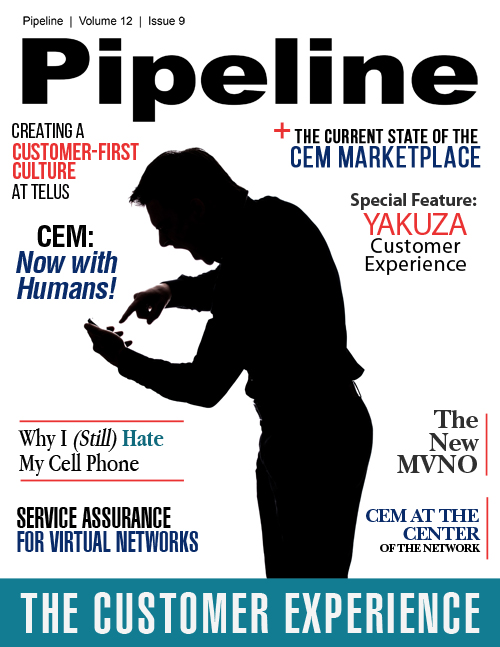Putting CEM at the Center of the Network
The lack of visibility into end-to-end experience means that network and customer orientated data means departments are making their decisions based on partial data. They only have the partial network quality information, or the feedback information from the customer interface – but not true end-to-end visibility of both. CSPs must therefore adapt to find new ways of looking at and managing their infrastructures holistically.
The Whole Picture
Fortunately, there is a better way and tools exist to create a comprehensive end-to-end view into the service experience. This can be achieved with real-time analytics platforms, which combine input from various sources to cover the whole service chain from the subscriber’s device to the service, network and data centre. Such data sources can include passive and active probing solutions, end-user device agents, geo-location based radio and infrastructure performance. Using field portable solutions, performance monitoring solutions with interfaces to third-party data sources, and real-time analytics capabilities with embedded heuristics, CSPs can access precise and actionable intelligence about the experiences of their customers.
Traditionally, the end-to-end picture has been used by network and service operations, engineering and planning teams, and the second or third tier of customer support to assure services are up and running and the most efficient troubleshooting is enabled to fix any issues. But the CEM challenge can only be solved by focusing on the foundation: how customers are experiencing the service and how it can be improved. By doing this, CSPs can produce valuable intelligence such as customer profiles, segmentation and behavioural data. This information can be further used in many other network and customer facing functions directly via APIs.
Intelligent, cloud-enabled testing and monitoring solutions with a comprehensive real-time analytics platform can deliver an end-to-end view of service experience. This rich data is key to stakeholders like marketing, customer care, network operations, planning and engineering. By deploying tools to proactively collate and analyse data in real-time from all sources through receptors distributed across the network, CSPs can quickly identify pain points within their infrastructure and can divert their attention to where it is needed most – before it impacts their customers and the bottom line.
Market Opportunities
Network, service and application instrumentation and end-to-end real-time analytics capability are fundamental to CSPs’ transformation to next-generation virtualized hybrid networks with self-optimization capabilities. The next generation of converged networks are going to be very intelligent and dynamic; but to ensure user quality of experience, CSPs need real-time and very rich data analytics to help them move from a traditional connect and monitor model to a predict and adapt one. Leveraging data and analytics capabilities to drive service differentiation successfully puts CSPs on the front foot, allowing them to actively monitor their progress and take proactive action before it is needed.
We’ve seen big interest in the overall CEM area and now the tools are available to establish a strong foundation to better support it. But in spite of this, there are too few success stories of companies that have created customer offerings for new services. It may be that there are too many interests within the CSP ecosystem that need to be protected for new, holistic approaches to CEM to be rolled out successfully. Nevertheless, CSPs that can do that and focus on network engineering and troubleshooting by adopting the next generation of smart service assurance tools stand to benefit greatly.



















